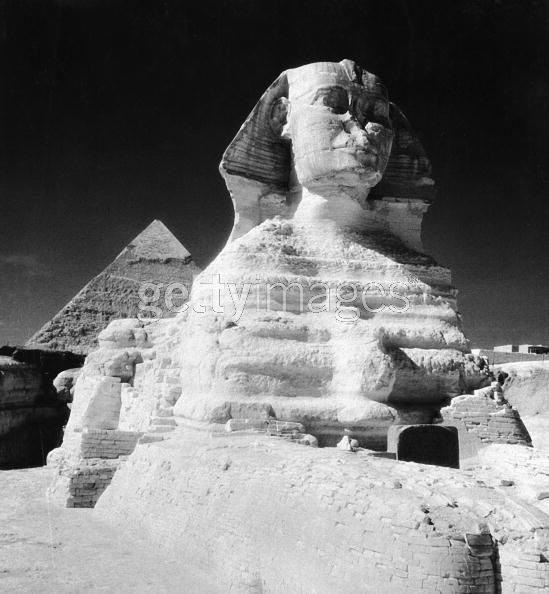|
 
- UID
- 170391
- 帖子
- 2397
- 积分
- 3796
- 学分
- 40238 个
- 金币
- 252 个
- 在线时间
- 413 小时
 
|
|
本帖最后由 evaxiaofan 于 2010-11-30 13:34 编辑

The Sphinx: Totally Random Trivia
On Nov. 2, Egypt announced that archaeologists had discovered a set of millennia-old walls around one of the most iconic ancient monuments in the world -- the Great Sphinx of Giza. The walls, running 282 feet and 151 long, are believed to have been built by Pharaoh Thutmose IV (14th century B.C.), who constructed them because a dream promised he would become king of Egypt if they were completed. But the walls are only the latest secret to be discovered surrounding the 4,500-year-old sphinx.

Face in the Sand
Sphinxes were carved by Egyptian artisans as early as the Old Kingdom, which thrived around the third millennium B.C., and were associated with the civilzation's solar gods. What they were called back then is unknown. The Great Sphinx was probably built around 2500 B.C. Here: A group of American tourists visit the Great Pyramid and Sphinx at Giza in April 1923.

Look on My Works, Ye Mighty!
The Greeks learned of sphinxes through trade with Egypt, and gave the mythical creatures the name we know today. It is believed by many that they named the lion-bodied monster "the stranglers" after the method by which a lioness kills her prey (in which case "sphinx" shares a root with our modern word "sphincter"). Here: The Great Sphinx stands in 1901.

King Among Ruins in 1890
The Greeks appropriated the concept of the sphinx and made her a single monster that immigrated from Ethiopia to terrorize the Greek city of Thebes until defeated by Oedipus (yes, that Oedipus). She asked each traveller who approached the following riddle: "Which creature in the morning goes on four legs, at mid-day on two, and in the evening upon three, and the more legs it has, the weaker it be?" Anyone who got the answer wrong became sphinx food. Here: The Great Sphinx is buried under sand in 1890.

Riddle Me This
Oedipus came up with the right answer, and the sphinx of Thebes committed suicide by throwing herself off a cliff. The correct solution? Man, who begins life crawling (four legs), graduates to walking on two legs as an adult, and then takes to using an cane in old age (three "legs"). Here: English troops take time out after the bombardment of Alexandria to visit the pyramids and the Sphinx in 1882.

Restoration to Grandeur in 1925
After the Great Sphinx was abandoned millennia ago, it was eventually covered up to its neck in sand. In 1817, an Italian team uncovered the statue's chest for the first time since it was buried. French archaeologist Émile Baraize unearthed what is believed to be the entire statute for the first time in millennia from 1925 to 1936.

The Nose Knows
A common legend is that the nose of the Great Sphinx is missing because Napoleon shot it off during target practice for his cannoneers during the French dictator's African campaign. It's definitely not true: As early as the 15th century, Egyptian accounts discussed the missing facial feature. One writer said that a reverent Sufi Muslim destroyed the nose when he discovered local peasants were giving the sphinx offerings in hopes of receiving bountiful harvests. |
|